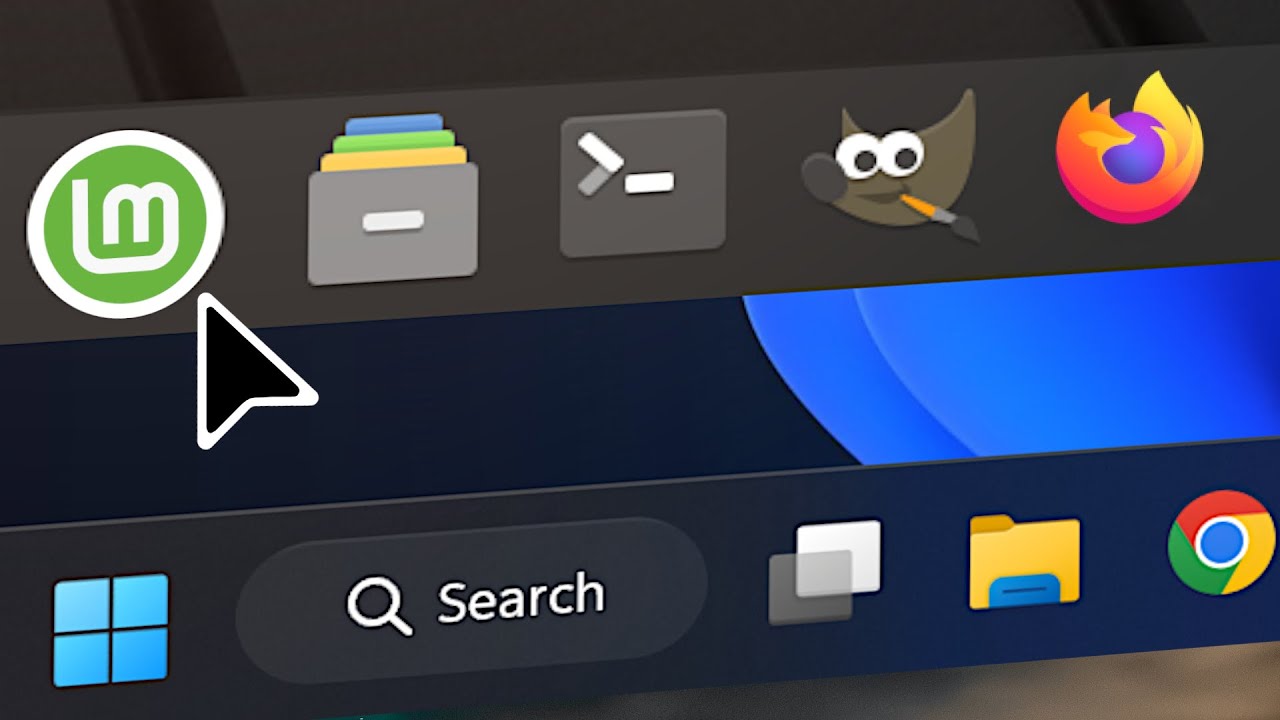TLDW of this video from ChatGPT
The video highlights the following main points about why Linux Mint is considered better than Windows 11:
-
Start Menu and Customization: Linux Mint’s menu is more organized and customizable than Windows 11’s start menu. It offers three columns, resizable icons, and customizable labels.
-
Taskbar (Panel) Features: Linux Mint’s panel is more flexible, allowing repositioning, resizing, and creation of additional panels. Applets enhance functionality, offering features like quick desktop access and window behavior customization.
-
Privacy and Telemetry: Linux Mint is privacy-focused, avoiding telemetry. Certain apps’ telemetry can be manually disabled. Windows 11 is criticized for lacking privacy.
-
Bloatware and Pre-installed Apps: Linux Mint has minimal bloatware, including useful tools or open-source alternatives. Windows 11 can have cluttered start menus with unwanted icons.
-
Batch File Renaming and Management: Linux Mint’s file management includes advanced batch renaming with insertion, removal, and case conversion. Windows 11 lacks similar features.
-
Security (Future Topic): Security is mentioned as a potential future topic, with Linux Mint considered more privacy-oriented than Windows 11. Discussions about security are acknowledged.
The narrator encourages viewer engagement and discussion on the covered topics.



Ok. Now, change the audio bit rate in the GUI? You can try any Linux you like.
The Lack of functions in the GUI to configure Hardware devices is a serious problem for Linux. You can’t Configure anything on your AMD graphics card, set sleep timeout of you wireless game controller, or enable HDR.
I’m currently having a good time in Arch but I’m frustrated that GUI controls for basic stuff is still missing. Most of this stuff has been in Windows for decades.
Rather focusing on the how customisable the desktop environment is, they need to focus on making Hardware configuration easier.
Similar one, try to change mouse acceleration. The last couple distros I had tried were completely lacking any config option for that.
There are already comments about how a GUI isn’t needed or something like that, but Linux will never become remotely mainstream as a consumer OS with that kind of attitude.
As in turn it off or on, or change the curve itself? The option to turn it off or on is in the main Settings -> Mouse and Touchpad page with GNOME 44, labeled “Mouse Acceleration.” Which is, in my opinion, easier than Windows’ obscure Windows 95-style pop-up for “additional mouse settings” and then “enhance pointer precision.”
How DARE you ask about GUI controls! But seriously I’d love to see more of it. It certainly would make on-boarding of windows users much easier. All the CLI functions scare most away. It seems like every time I ask about a GUI for something I get shot down hard. Like I understand why CLI is more prevalent, way easier to troubleshoot and instruct people across multiple distros. But if you want to grow the Linux community, ease of use to the broad public has to become priority, and I think GUIs is the best starting point for that.
And having things built in would be a major help as well, instead of having to see if the software center has it, and then searching GitHub when it doesn’t. Again, I get that some distros might have that, but that would be a niche distro for certain things. A nice GUI tool to adjust GPU parameters would be super (using coolero at the moment), a better audio device manager, gamepad device manager as well, task manager that’s a little more user friendly.
I’m rambling and I don’t want to sound like I dislike Linux. I made Mint my only OS on my laptop and two PCs in my house. I love it. I keep W11 on my gaming PC as a dual boot strictly for VR. That’s all that’s holding me back. I’m fine with CLI tools but I’d reeeeeeally like it if GUI tools became more prevalent.
Agreed. Last time I used my Wacom tablet on a Linux station, I had to type a bunch of commands every start up to get it to work in the correct aspect ratio because there was no GUI tool for that. Surely there’s a way to register that kind of stuff for start up, but why do I have to figure this out ? I just need to get work done. Wacom tablets have been around for 30 years and are used by most of the digital artists out there, it’s not some exotic peripheral. It seems like it should be easier
https://github.com/simonepalmer/pipewire-controller https://github.com/wwmm/easyeffects https://gitlab.freedesktop.org/pipewire/helvum https://kx.studio/Applications:Catia https://github.com/cyber-sushi/pipewire-sample-rate-config https://github.com/rncbc/qpwgraph
The first looks like it does specifically what you mentioned. I haven’t tried any of these except Helvum, and I don’t remember if you can change the bitrate.
I don’t have enough patience (or need) to use a GUI for stuff like this - wpctl is fairly comprehensive - but if it’s something you need to do a lot I get the appeal.
And, I hear what you’re saying about hardware config tools. I maintain a cross-platform monitoring tool, and frequently get requests to support graphics cards; it’s the most troublesome and difficult chore, because these devices all have bespoke APIs, and it’s a PITA to support them - moreso because it’s impossible to test the support when you don’t have access to all of the hardware.
Agreed. When I went home to put on some music to bang your mom too, it took me like 20 minutes to adjust to the optimal audio bit rate. It totally killed the mood.
Hey, you can edit config files in GUI 😄
I know GUIs are important for being mainstream, but I also don’t see the point of getting whole team of UI/UX designers to work on graphical settings option to change simple intiger value of system config.
Changing audio bitrate is an option for advanced users. I open new tab in my text editor, fuzzy search the file and desired option in seconds and save, when in something like control panel is whole journey interrupting current workflow.